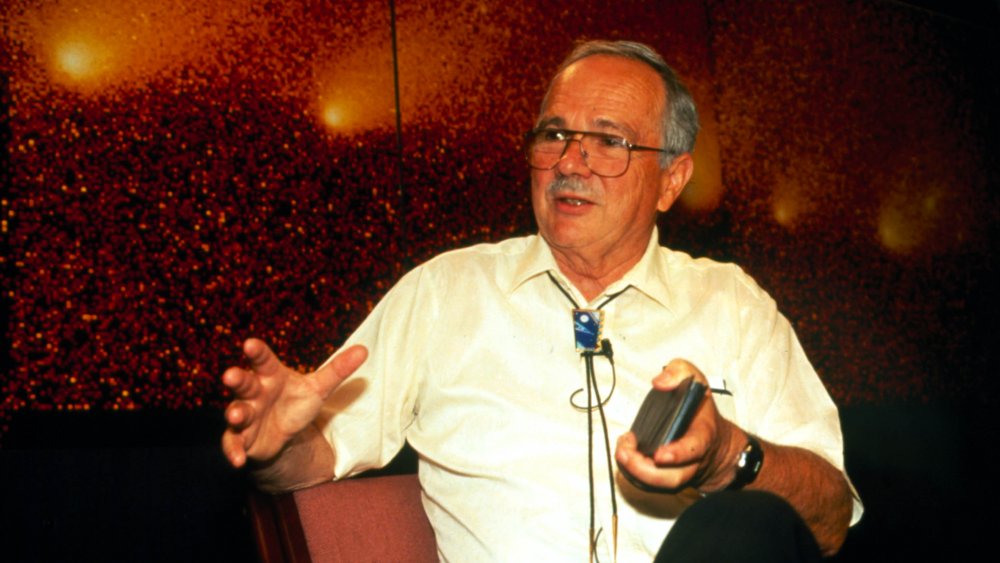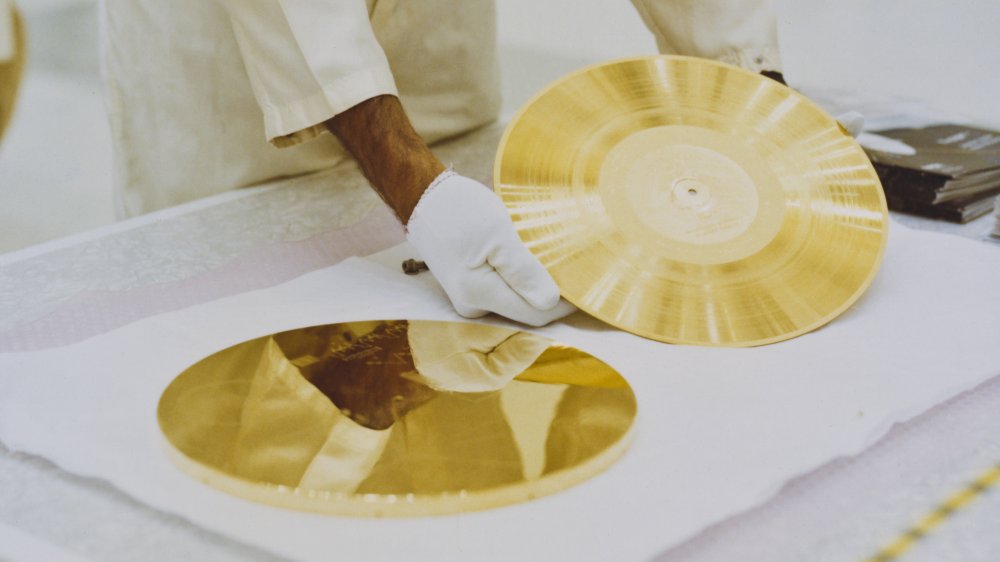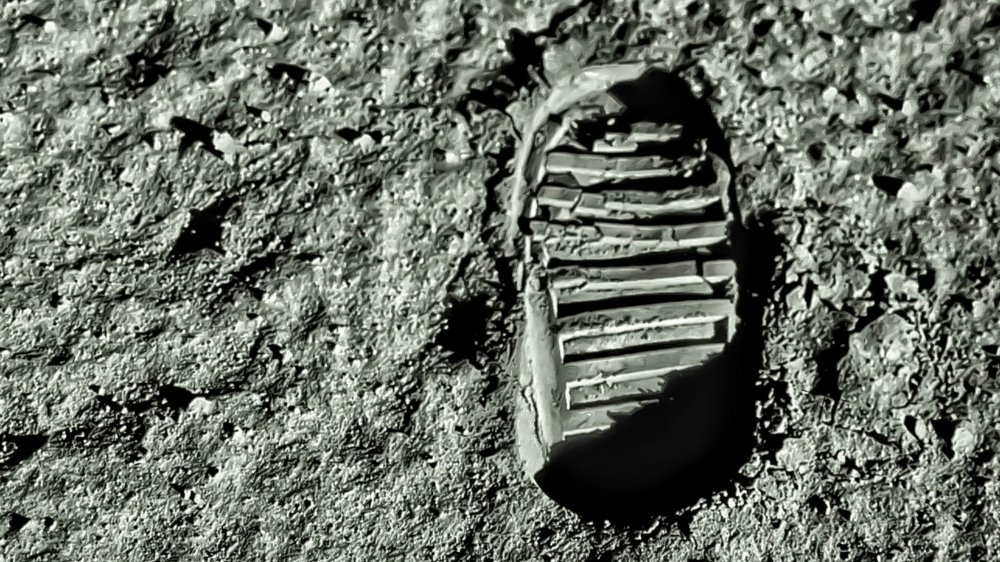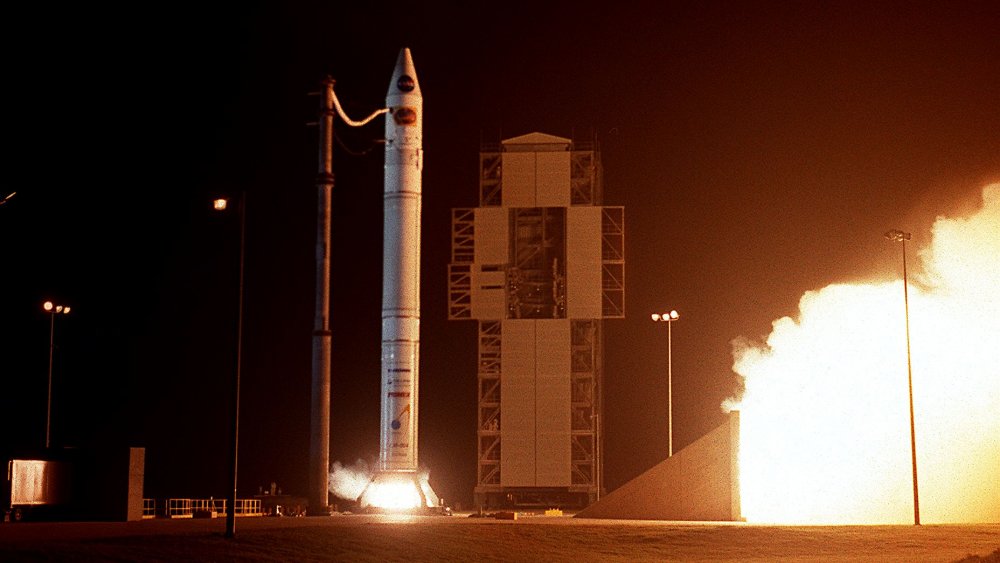This Man Is The Only Human Buried On The Moon
In terms of ideal career paths, being an astronaut is one of the coolest jobs you could imagine. If you grew up in a time where nickels were a meaningful form of currency, or in the golden age of Nickelodeon, you'd probably think it's the job kids would want more than any other.
Unfortunately, a recent study found that American children are three times more likely to want to be vloggers than astronauts, according to BigThink. If they shoot the moon, it'll be with a camera, and if they land amongst the stars, they'll probably be Youtube stars.
For the brave few who crave real space over Myspace, there's still hope. NASA accepts around 12 astronauts into its training program every couple years, but there's another way to make it to the moon, and Eugene Shoemaker is proof.
Who the heck is Eugene Shoemaker?
Who the heck is Eugene Shoemaker, you ask? According to HowStuffWorks, he's a famed geologist and the founder of planetary science — the study of planets, moons and the processes that form them. He also happens to be the only human buried on the moon.
How he got there is a bit of a longer story — a story of what may be the most romantic family-friendly gesture ever performed in space. In fact, the only competition is when Ann Druyan, creative director of NASA's Voyager Interstellar Message Project, meditated on her love for fiancee Carl Sagan, recorded the electrical signals and put it on a golden record for future alien civilizations to find. That's pretty romantic, but Shoemaker might have them beat.
Shoemaker dreams of moon boots
Born April 28, 1928, Shoemaker began his career as a geologist, helping the United States Geological Survey study impact craters. During this time, he became a major proponent of the hypothesis that an impact event led to the extinction of dinosaurs, according to the New York Times. His success in this field led to his appointment as director of the team that would map the moon, cementing his status as a founder of astrogeology.
His career would further blossom into a long, fruitful relationship with NASA, including training astronauts and discovering more comets and asteroids, along with his wife Carolyn, than almost anyone else. Most notably was the Shoemaker-Levy 9 comet, which drew worldwide attention in 1994 when it crashed into Jupiter.
Compared to the average person, Levy lived an incredible life full of monumental achievement, but there was one goal that always eluded him. Having spent much of his career studying the Moon, he dreamt of one day going for himself. Despite the name Shoemaker, he couldn't make moon boots to help him jump there, and he lacked the dancing skills of Michael Jackson, so moonwalking wasn't an option either. But a man could dream.
When the possibility of a lunar landing began to look realistic, Shoemaker applied to the astronaut program, but was barred due to a medical condition called Addison's disease, which affects the adrenal gland.
Shoemaker meets his maker, then makes his dreams
Unfortunately, Shoemaker's dreams would come to a sudden end. While doing research in Alice Springs, Australia, he and his wife were involved in a car accident. Carolyn Shoemaker would survive, but Eugene would perish at age 69 without ever living out his ultimate dream.
The last line of his New York Times obituary is a quote of his that reads: "Not going to the Moon and banging on it with my own hammer has been the biggest disappointment in life."
Knowing full well what Shoemaker's wishes were, a former student of his devised a plan to put one ounce of his ashes on NASA's Lunar Prospector Spacecraft, a research probe designed to crash into the moon.
His ashes were placed in a special polycarbonate urn capsule built by Celestis, the same company that sent "Star Trek" creator Gene Roddenberry's ashes into space. The capsule was decorated with a brass foil ribbon with a picture of Barringer Crater, where he began his career, and a quote from "Romeo and Juliet," reading:
And, when he shall die,
Take him and cut him out in little stars,
And he will make the face of heaven so fine
That all the world will be in love with night,
And pay no worship to the garish sun.
The probe launched in early 1998 and orbited for over a year before being deliberately crash landed near the Moon's south pole. With it were Shoemaker's ashes, achieving his lifelong dream and bringing some closure to the rest of his family.
"This is so important to us," Carolyn Shoemaker said in a press release the day of the launch. "It brings a little closure, in a way, to our feelings. We will always know when we look at the moon, that Gene is there."



